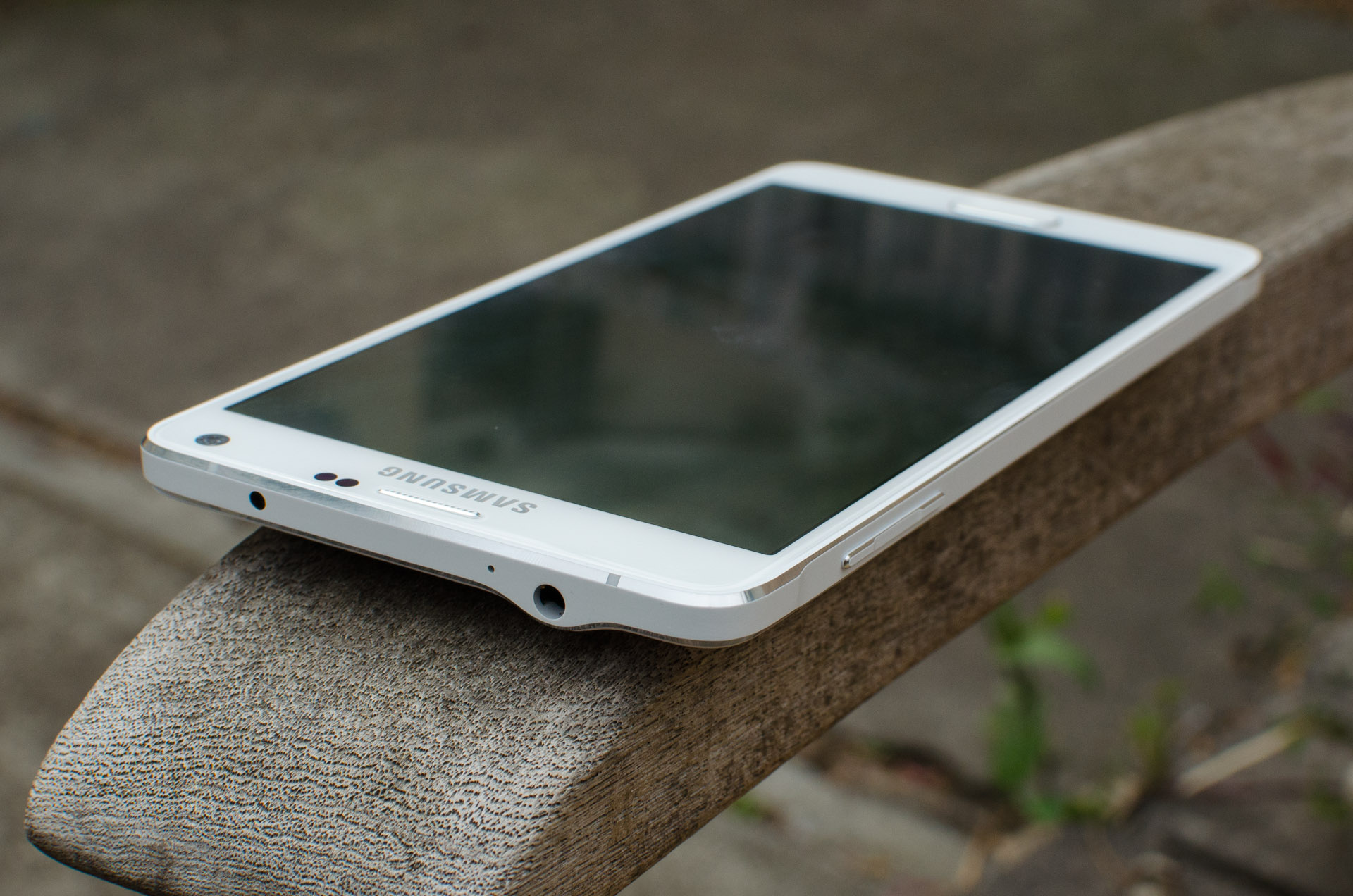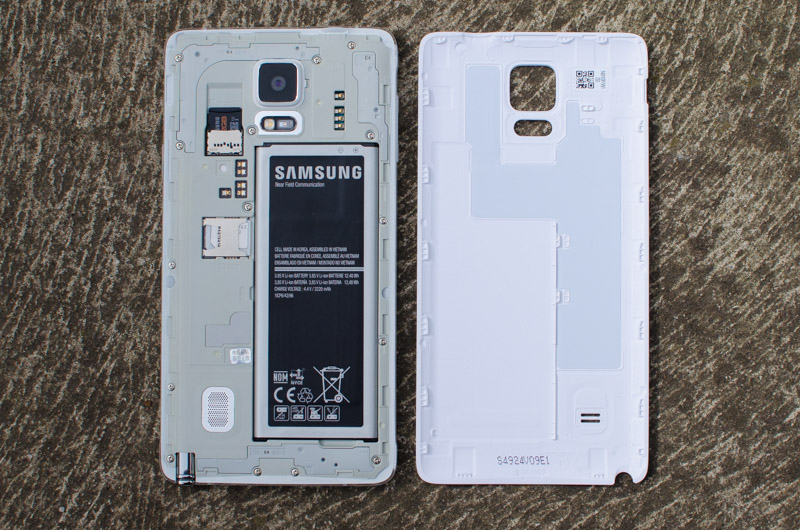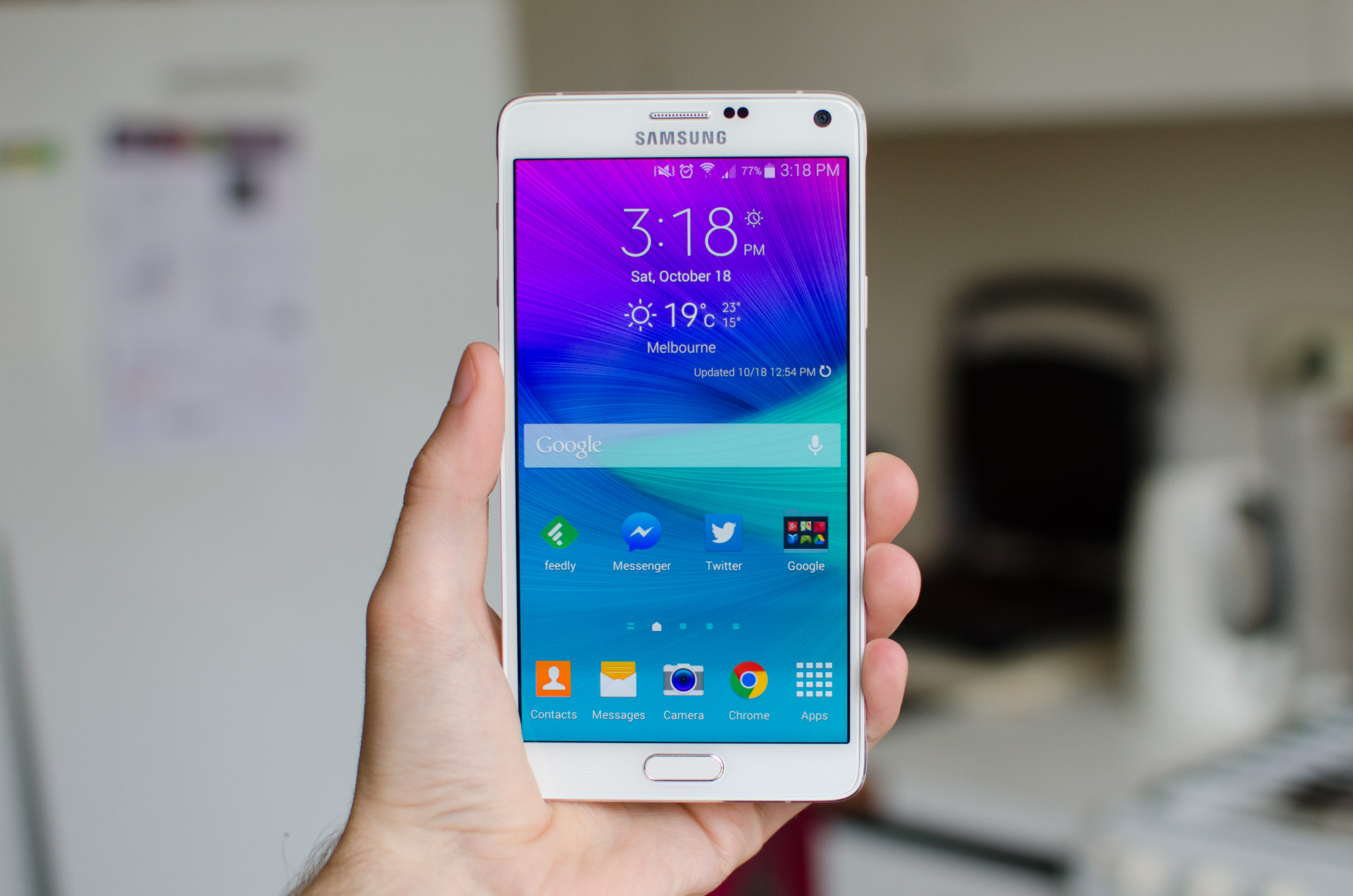Samsung was on to something when they launched the original Galaxy Note back in 2011. The large-screened smartphone seemed awkward at the time with its 5.3-inch display, but quickly became Samsung's second most popular line. The success in the phablet market spurred competitors like Sony (Xperia Z Ultra), Nokia (Lumia 1520), and even Apple (iPhone 6 Plus) to release their own large handsets.
It's no surprise that in 2014, Samsung is releasing their fourth-generation Galaxy Note. Like the Galaxy S5 that launched earlier this year, the Galaxy Note 4 is an incremental update on what came before it. It's a similar size to and, on initial inspection, looks quite like the Galaxy Note 3, though the changes bat a little deeper than what might be apparent to begin with.
For starters, the Galaxy Note 4 is the second handset from the company to use a 2560 x 1440 Quad HD display (the first being the Quad HD variant of the Galaxy S5 that saw a limited release). It's 5.7 inches in size and uses Super AMOLED technology, which will be interesting from both a power consumption and subpixel matrix perspective.
Samsung has borrowed the part metal design used in the Galaxy Alpha, ditching the cheap plastic that has received a lot of criticism over the years. We're also looking at an improved 16-megapixel camera with optical image stabilization (finally!), and a refined software suite that includes updates to the device's signature S Pen functionality.
As for the rest of the hardware, Samsung is using cutting edge SoCs in the Galaxy Note 4. Some markets will receive the Samsung Exynos 7 Octa 5433 model with Category 4 LTE, while others will get the Qualcomm Snapdragon 805 model with Category 6 LTE. Both SoCs are new to the TechSpot test bed and will provide interesting talking points, especially the Exynos chip which utilizes ARM's new 64-bit CPU cores.
From the moment I opened the Galaxy Note 4's box it was obvious how much of an improvement the metal would make. The difference between the new aluminium-magnesium alloy rim and the faux-metal plastic rim of the Note 3 is massive. Samsung's high-end, premium smartphone finally feels and looks like it's living up to its price tag, and that's thanks to the company finally listening to and addressing widespread complaints about the design.
The rim that runs around the sides is crafted from a single piece of metal, and has been painted to match the color of the rest of the device. Initially I was skeptical that the paint job might look a tad unimpressive, but thanks to the carved metal sections that poke out either side the handset looks great without being overbearingly shiny. The paint doesn't hinder the metal feel either, so you still get the benefits of the alloy beneath.
If you look really closely you'll spot several small polycarbonate gaps in the metal that allow the Note 4 to still have good wireless performance. These gaps are hardly noticeable, and are integrated much better than the obvious strips on the back of the HTC One M8, for example. The rim also bulges slightly at the top and bottom of the handset, which improves the look of the handset.
Aside from the metal makeover, the Note 4's design is very similar to the Note 3. Both devices are essentially the same size, and the front panels are nearly indistinguishable. The Note 4 is blessed with a larger front-facing camera lens and a slightly enlarged home button to accommodate the fingerprint scanner, but that's about it. Oh, and if you're wondering about the fingerprint scanner, it's still as ineffective and gimmicky as the one in the Galaxy S5.
The back cover is still made of faux-leather, though Samsung has improved it in several ways. The terrible fake stitching has been removed in favour of a clean and far batter looking design, and the coating applied to the plastic has been revamped. The Note 4 now feels more like the Galaxy S5, which in turn makes it feel more like real leather. It's still not quite as good as the real thing, though I'm perfectly happy with what Samsung delivers.
The rear speaker has been relocated from the bottom to the back cover, and it's still tinny and terrible despite its loudness. The camera lens also protrudes from the cover, bringing the Galaxy Note 4's maximum thickness up to 10.0mm from 8.5mm; this is around the same as the Note 3. Below the camera you'll find the LED flash, heart rate monitor, UV sensor and pulse oximeter. Yep, that's even more sensors than the Galaxy S5.
Removing the back cover reveals the large removable battery, microSD card slot and micro-SIM slot. The piece of plastic protecting these components is somewhat flimsy, though it attaches solidly. The microSD card slot is always a welcome feature, and I'm sure the removable battery will also come in in handy to some people, though I've never bothered swapping on the go.
Around the edges you'll find very solid volume and power buttons to the left and right sides respectively. The top features a 3.5mm headphone jack and an infrared LED, while on the bottom is the micro-USB 2.0 port and stylus slot. I'm disappointed that Samsung reverted back to USB 2.0 after including USB 3.0 on the Note 3, though the company probably received too many queries about the oversized port and its compatibility with previous cables.
The S Pen itself is very similar to the one found in the Galaxy Note 3: it's the same shape and comes with the same singular button for extra functionality. The design of the pen makes it feel a bit cheap, as it's entirely constructed of plastic, though it's lightweight and serves its purpose well.
Also, just in case you were wondering, the Note 4 is not water resistant like the Galaxy S5. Don't be fooled into thinking that because Samsung's smaller-sized flagship can be used in a pool that the Note 4 can as well. It can't, and if you try you'll probably be left with an expensive paperweight.
One other comparison that should be made between the Note 4 and its predecessors is that it feels noticeably sturdier. The Note 4 with its part-metal body feels absolutely rock solid, with no perceivable flex when moderately stressed. Although the Note 3 never really flexed much either, the Note 4 feels stronger and more dependable.
As for its size, there's no escaping that the Note 4 with a 5.7-inch display is a large device. Although it's smaller than the iPhone 6 Plus, one-handed use can be tricky, especially when it comes to hitting the capacitive navigation buttons embedded in the bottom section of the bezel. A phone like this will take some adjusting to: it's taken up until my fourth review of a Note product to feel really comfortable using a phone as large as this.
As a quick aside, I also wanted to test out these supposed Galaxy Note 4 'GapGate' claims; claims that involve a small gap between the edges of the Note 4's display assembly and the metal rim. Not only did my retail unit not have a gap large enough to fit in a piece of paper, but even if it did, it wouldn't matter. The Note 4 is not the first smartphone to feature such a (tiny) gap, and it won't be the last. And on top of that, the gap does not affect the usability or aesthetics of the device in any meaningful way. What a completely overblown load of crap.

















